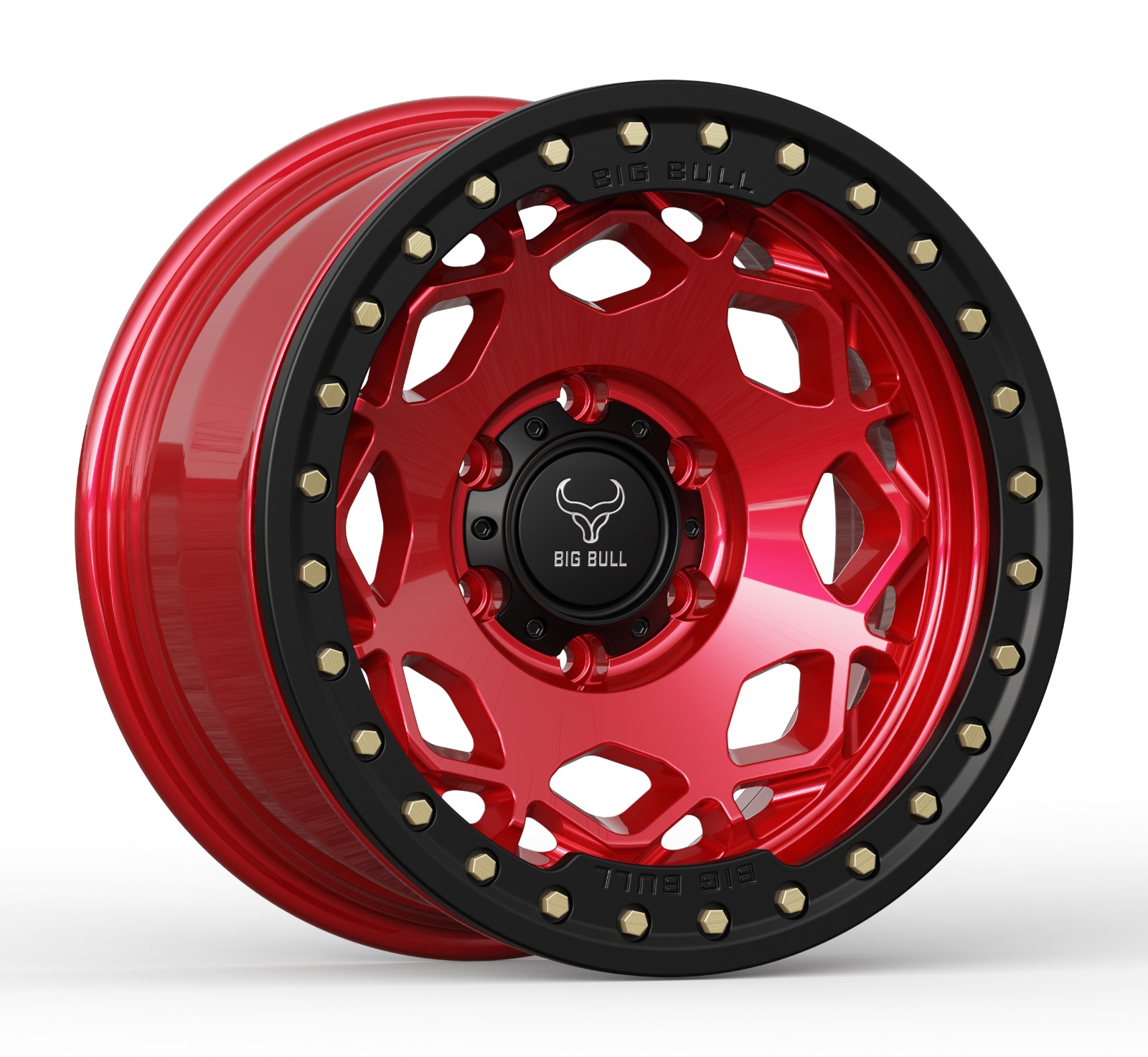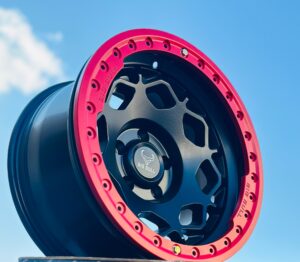If you spend any amount of time around serious off-road enthusiasts, you’ll quickly notice certain upgrades are talked about with a mix of pride and reverence, and beadlock wheels almost always make that list. They’re not just another shiny accessory to show off at the next meet; they serve a functional role that can completely change how a vehicle behaves in extreme terrain. For some drivers, they’re a “must-have.” For others, they’re an expensive luxury that might never pay off. Let’s talk about what makes beadlocks unique, how they work, and if they are worth it for the way you drive.
Beadlock wheels are what?
Beadlock rims are made to solve one very specific problem: keeping your tire firmly attached to the wheel even when the air pressure is very low. When you air down your tires to 12 PSI for better grip in sand, mud, or rocky trails, the tire bead (the inner edge of the tire that contacts the wheel) can lose its seal. On a standard wheel, that can mean the tire slips, spins on the rim, or even pops off entirely. A beadlock wheel prevents this by mechanically clamping the bead in place so it simply can’t move. While this might sound like overkill for casual drivers, for anyone tackling rough terrain, whether it’s rock crawling in Moab, dune running in Glamis, or deep mud bogging. This security is more than just peace of mind; it’s often the difference between finishing the trail or calling for recovery.
How Do Beadlock Wheels Work?
The principle is straightforward but clever. A beadlock ring is usually made from aluminium or steel bolts onto the wheel and sandwich the tire bead securely in place. Most off-road beadlocks use between 16 and 24 high-grade bolts, spaced evenly around the wheel, to apply uniform clamping pressure. This prevents the bead from slipping, no matter how much torque you apply or how little air pressure you run.
There are a few differences:
• Single beadlock wheels only lock the outer bead. They are the most common type for off-road trucks, Jeeps, and SUVs.
• Double beadlock wheels hold both the inner and outer beads in place, making them very safe, especially for racing.
• Simulated beadlock wheels look like the real thing, but they don’t hold beads in place. From a distance, all three might look similar, but only the real deal allows you to safely air down to single-digit PSI without worrying about unseating a tire.
Street-Legal Beadlock Wheels: The Legal Grey Zone
Here’s where it gets tricky. It depends on where you live, whether or not street-legal Beadlock wheels are legal. In some states and countries, beadlocks that the DOT has approved are fine to use on highways. In others, they’re restricted to off-road use only due to concerns about maintenance and potential high-speed failure. The reality? Many off-roaders still run beadlocks daily without issues, but it’s important to know your local laws before you drop a few grand on a set. Even if they’re legal, remember that beadlocks require more maintenance than traditional wheels. If you’re not the type to check bolt torque regularly, they might not be the best daily driver option.

Picking the Right Size and Material
Aluminium beadlock wheels are lighter than other types of wheels, which can help with acceleration and handling, especially when racing or running in the desert. They also don’t rust as easily. Steel beadlock wheels, on the other hand, are heavier but much stronger. If you bend one on the trail, you can often hammer it back into shape. The most common beadlock wheel sizes for off-road use are 15″, 16″, and 17″. The smaller diameters let the tire sidewalls be taller, which helps them flex and grip better on rough ground. There are bigger beadlocks for bigger rigs or custom builds, but they are usually more for looks than for performance. Big Bull wheels are all well-known brands that offer different benefits, such as being lighter, being built to last, or having a specific racing pedigree.. Your choice will depend on your priorities, your budget, and your vehicle’s intended use.
Maintenance: The Hidden Commitment
Owning beadlocks is a little like owning a high-performance engine; you get the benefits, but you also take on extra upkeep. The clamping bolts must be checked and re-torqued regularly. If you don’t do this, the clamping might not be even, there might be leaks, or you might even lose the beadlock ring. Mud, sand, and other debris can also get stuck between the ring and the wheel, making them harder to clean than regular off-road wheels. Some experienced off-roaders carry a small torque wrench in their trail kit just for this purpose. It’s a small hassle, but one that can save you a ruined weekend.
Cost vs. Benefit: Are They Worth It?
There’s no denying it true beadlocks are more expensive than standard alloy wheels. But for those who frequently air down below 15 PSI, the advantages are massive. Better traction,
reduced risk of tire damage, and the ability to tackle more challenging terrain all come with the territory. That said, if most of your driving is on pavement with the occasional dirt road, you probably won’t get enough benefit to justify the cost and upkeep. For the weekend warrior who only hits mild trails, a good set of traditional off-road wheels and tires might be the smarter play.
FAQs About Beadlock Wheels
Are beadlock wheels legal for street use? In some areas, yes, if they meet DOT standards. Always check your local laws before buying. Do beadlocks require special tires? No, but strong beads are recommended to handle the clamping force . How often should I check beadlock bolts? Before every major trip and after any intense off-road run. Can beadlocks help in sand? Absolutely running ultra-low PSI without risk of losing the bead is a huge advantage. Are simulated beadlocks worth it? Only for looks, they don’t provide any actual bead retention.
Final Thoughts
Beadlock wheels are not for everyone. They’re a niche upgrade designed for drivers who push their vehicles into terrain where a standard wheel just won’t cut it. If that’s you, they offer real performance gains, better control, and the freedom to run ultra-low tire pressures safely. If not, you might be better off putting that budget toward tires, suspension, or recovery gear. But for those who need them, beadlocks aren’t just an accessory; they’re a tool that can turn a risky climb into a sure thing.











